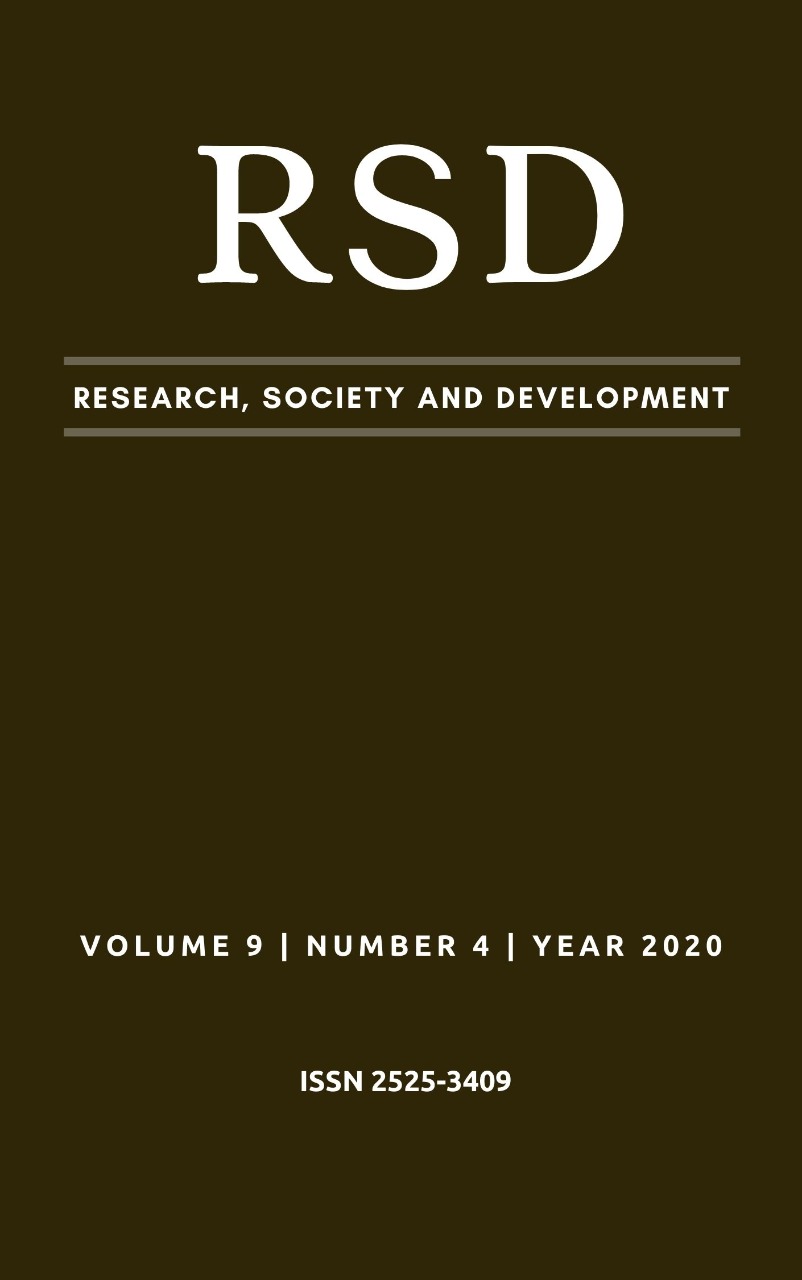A Autoavaliação como Instrumento de Avaliação Diagnóstica para o Ensino de Matemática em turmas do PROEJA
DOI:
https://doi.org/10.33448/rsd-v9i4.3055Palavras-chave:
Autoavaliação, PROEJA, Ensino de Matemática.Resumo
Este trabalho é resultado de uma pesquisa de Mestrado em Educação Matemática realizada com quarenta alunos do PROEJA, distribuídos em três Campi, de uma Escola Federal na cidade do Rio de Janeiro. A pesquisa foi realizada com alunos recém-chegados à instituição e teve como objetivo desenvolver e aplicar um modelo de autoavaliação que possibilitasse orientar os professores no planejamento das aulas e das atividades pedagógicas e curriculares a serem trabalhadas ao longo dos semestres subsequentes. Além de proporcionar aos alunos a oportunidade de reflexão sobre sua escolarização, a importância do trabalho cooperativo e as questões atitudinais e conceituais nas aulas de Matemática. O artigo apresenta em seu escopo detalhes sobre os percursos metodológicos, pautados na pesquisa-ação, e nas questões utilizadas. Os resultados demonstraram que, para esse grupo, o instrumento pode ser utilizado na orientação do trabalho docente, além de ser importante para uma reflexão dos sujeitos frente às atitudes e conceitos matemáticos.
Referências
Bloom, B.; Hastings, T. E Madaus, G. (1983). Manual De Avaliação Formativa E Somativa Do Aprendizado Escolar. São Paulo: Pioneira.
Brasil. (1997). Parâmetros Curriculares Nacionais: Introdução Aos Parâmetros Curriculares Nacionais. Brasília: Mec/Sef.
Demo, P. (2001). A Nova Ldb: Ranços E Avanços. Campinas: Papirus.
Francisco, J.G.G.; Moraes, D. A. F. (2013). A Autoavaliação Como Ferramenta De Avaliação Formativa No Processo De Ensino E Aprendizagem. In: Congresso Nacional De Educação, 11., 2013, Curitiba, Anais [...] Curitiba: Universitária Champagnat, P. 14968-14983.
Haydt, R. C. C. (2008). Avaliação Do Processo Ensino-Aprendizagem. 6. Ed. São Paulo: Ática.
Luckesi, C. C. (2000). O Que É Mesmo O Ato De Avaliar A Aprendizagem? Pátio, Porto Alegre, Ano 3, N. 12,P. 6-11, Fer./Abr.
Mamona. S. S. C. (2017). Formação Inicial De Professores: Reflexões Sobre O Ensino E Os Conteúdos Matemáticos Na Educação De Jovens E Adultos. Boletim Gepem, Rio De Janeiro, N. 71, P. 68-78, Jul./Dez.
Regnier, J-C. (2002). A Auto-Avaliação Na Prática Pedagógica. Revista Diálogo Educacional, Curitiba, V.3, N.6, P.53-68.
Santos, C. R. Et Al (Org.). (2005). Avaliação Educacional: Um Olhar Reflexivo Sobre Sua Prática. São Paulo: Avercamp.
Silva, K. A.; Bartholomeu, M. A. N.; Claus, M. M. K. (2007). Auto-Avaliação: Uma Alternativa Contemporânea Do Processo Avaliativo. Rev. Brasileira De Lingüística Aplicada, Belo Horizonte, V.7, N.1, P.89-115.
Soares, S; Sátyro, N. (2019) O Impacto Da Infraestrutura Escolar Na Taxa De Distorção Idade-Série Das Escolas Brasileiras De Ensino. Disponível Em: Http://37reuniao.Anped.Org.Br/Wp-Content/Uploads/2015/02/Trabalho-Gt13-3571.Pdf. Acesso Em: 14 Mai.
Thiollent, M.(1985). Metodologia Da Pesquisa-Ação. São Paulo: Cortez.
Villas Boas, B. M. F. (2014). Avaliação Para Aprendizagem Na Formação De Professores. Cadernos De Educação, Brasília, N. 26, P. 57-77, Jan./Jun.
Zabala, A. (1998). A Prática Educativa: Como Ensinar. Porto Alegre: Artmed.
Downloads
Publicado
Edição
Seção
Licença
Autores que publicam nesta revista concordam com os seguintes termos:
1) Autores mantém os direitos autorais e concedem à revista o direito de primeira publicação, com o trabalho simultaneamente licenciado sob a Licença Creative Commons Attribution que permite o compartilhamento do trabalho com reconhecimento da autoria e publicação inicial nesta revista.
2) Autores têm autorização para assumir contratos adicionais separadamente, para distribuição não-exclusiva da versão do trabalho publicada nesta revista (ex.: publicar em repositório institucional ou como capítulo de livro), com reconhecimento de autoria e publicação inicial nesta revista.
3) Autores têm permissão e são estimulados a publicar e distribuir seu trabalho online (ex.: em repositórios institucionais ou na sua página pessoal) a qualquer ponto antes ou durante o processo editorial, já que isso pode gerar alterações produtivas, bem como aumentar o impacto e a citação do trabalho publicado.


